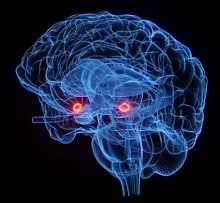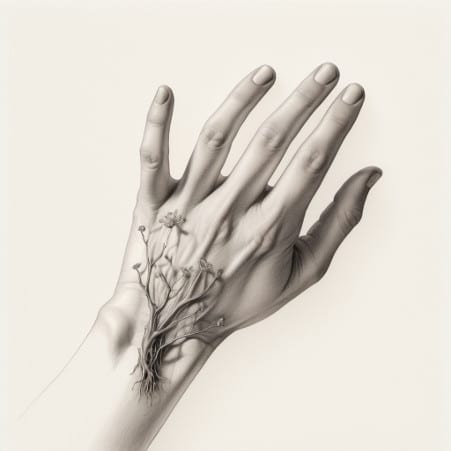When a person receives a massage, their body undergoes a complex experience that begins at the surface of their skin and continues all the way to the brain. Let’s discover together how a simple pressure on the skin can be perceived and analyzed by our nervous system, ultimately triggering beneficial effects on body and mind.
The skin, our sensory interface
When in contact with a massage, the skin acts as a gateway. It possesses a multitude of sensors that register information about touch. These sensors are associated with three types of sensory nerves, each with a specific role:
- Aβ nerves: These are fast nerve fibers that transmit information about the texture and location of what is being touched, for example whether a surface is soft or rough, or where contact is taking place.
- Aδ nerves: These also carry information rapidly, but are specialized in pain perception. For example, if the massage presses a little too hard, these nerves send a signal of discomfort.
- C nerves: These are slower, but far more numerous than the others, and have a special role to play. They transmit information about pain, but also about the pleasant or unpleasant quality of touch. They are particularly sensitive to gestures of speed and medium pressure. The fibers known as CT (or “C Tactile”) are, in particular, associated with this pleasant sensation.
The path of information to the brain
Once captured, this sensory information travels via nerves to the spinal cord, then to the brain, following two different circuits via the nuclei of the thalamus, a relay structure between external information and cerebral processing:
- On the one hand, the physical information of touch (its location and intensity) is sent to the somatosensory cortex. This is a region of the brain that receives and organizes sensory information, and maps the different parts of the body.
- On the other hand, the affective aspects of this touch (pleasant or unpleasant emotional feelings) are sent to another region of the brain, called the insula. This is activated not only when we are touched, but also when we imagine or anticipate contact. The insula is essential for our internal perception of the body, and is involved in regulating emotions and pain perception, in conjunction with other regions such as the amygdala and the cingulate cortex.
The amygdala
You’ve probably heard that we have an emotional center in the brain, the amygdala. The amygdala is a small, almond-shaped structure located in the middle of the brain, on the left and right sides. They’re involved in the feeling of emotions. When we feel intense emotions, such as fear or joy, it’s the amygdala that comes into play first to feel those emotions!

The benefits of massage
Massage also acts on our attention and perception of our own body, reinforcing our body awareness. This awareness is particularly beneficial for people with disturbed body perception, as may be the case with certain body image disorders.
It also helps to reduce stress, improve mood and facilitate acceptance of potentially painful treatments. These benefits make massage a genuine therapy for reconnecting with the body, promoting relaxation and recovery.
In short, behind the gesture of massage lies an entire biological process that helps the body feel better and release tension.
To remember:
- Our body, from the skin to the brain, has a differentiated way of processing tactile information:
- tactile information
- whether we like it – or not.
- Appreciation is sent to the insula, connected to the amygdala, which is known as the emotional center.
Sources :
- Abraira, V. E., & Ginty, D. D. (2013). The sensory neurons of touch. Neuron, 79(4), 618-639. https://doi.org/10.1016/j.neuron.2013.07.051
- Craig, A. D. (2009). How do you feel – now? The anterior insula and human awareness. Nature Reviews Neuroscience, 10(1), 59-70. https://doi.org/10.1038/nrn2555
- Geri, T., Viceconti, A., Minacci, M., Testa, M., & Rossettini, G. (2019). Manual therapy: Exploiting the role of human touch. Musculoskeletal Science and Practice, 44, 102044. https://doi.org/10.1016/j.msksp.2019.07.008
- Kirsch, L. P., Besharati, S., Papadaki, C., Crucianelli, L., Bertagnoli, S., Ward, N., Moro, V., Jenkinson, P. M., & Fotopoulou, A. (2020). Damage to the right insula disrupts the perception of affective touch. eLife, 9. https://doi.org/10.7554/elife.47895
- Lloyd, D. T., McGlone, F., & Yosipovitch, G. (2015). Somatosensory pleasure circuit: from skin to brain and back. Experimental Dermatology, 24(5), 321-324. https://doi.org/10.1111/exd.12639
- Morrison, I., Löken, L., & Olausson, H. (2010). The skin as a social organ. Experimental Brain Research, 204(3), 305-314. https://doi.org/10.1007/s00221-009-2007-y

